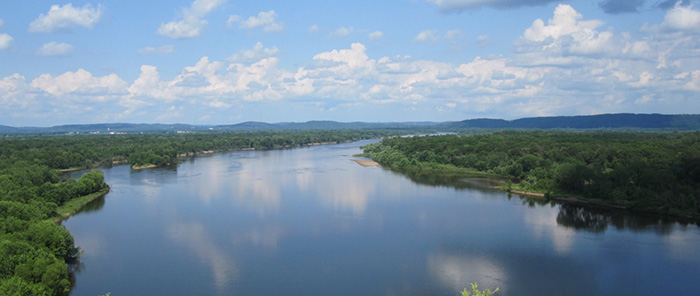
The U.S. Army said it will “consider” state environmental regulations but will ultimately base its cleanup of any PFAS contamination at the former Badger Army Ammunition Plant on less-protective federal CERCLA (Superfund) standards. If approved, the draft plan – open for public comment until May 15 – will allow the military to leave more contamination behind than other responsible parties in Wisconsin.
In written comments submitted to the military today, Citizens for Safe Water Around Badger (CSWAB) said that pending decisions at Badger are “significant both for our community and as precedents for the management and cleanup of PFAS at federal facilities throughout the State of Wisconsin. These sites include Fort McCoy (Sparta), Air Reserve Station (Former 440th, Milwaukee), Volk Field (Camp Douglas), Wisconsin Air National Guard – 115th Fighter Wing (Madison) and more.”
Notably the Army’s draft study at Badger ignores a formal request from the Wisconsin DNR in November of last year to evaluate 36 PFAS compounds currently under consideration for state groundwater enforcement standards. Instead, the military’s health risk assessment is limited to only three PFAS compounds (PFOS, PFOA, and PFBS) for human exposure via groundwater and soils – glossing over PFAS chemicals detected at significantly higher concentrations at Badger such as PFBA and PFPA.
The Army also limits the scope of its study to current groundwater use which contradicts Wisconsin environmental protection law, arguing that onsite groundwater consumption at Badger is extremely limited right now. However, the Comprehensive Groundwater Protection Act (Chapter 160) is based on the premise that all groundwater aquifers in Wisconsin must be protected equally to assure that they can be used “for people to drink today and in the future.”
PFAS are a group of man-made chemicals that are highly persistent in the environment and in the human body – meaning they don’t break down and can accumulate over time. Research has shown probable links between PFAS exposure and cancer, thyroid disease, high cholesterol, ulcerative colitis, and pregnancy-induced hypertension.
The former Badger Army Ammunition Plant lands have been transferred to the Wisconsin DNR (Sauk Prairie Recreation Area), Ho-Chunk Nation, U.S. Department of Agriculture Dairy Forage Research Center and Town of Sumpter. However, the Army retains responsibility for environmental cleanup.
HOW YOU CAN HELP!
Support Department of Defense compliance with Wisconsin’s environmental protection laws and advisories
Public comment on the Draft PFAS study at Badger may be submitted until May 15 to:
Mr. Bryan Lynch, U.S. Army Environmental Command, c/o SpecPro Professional Services, ATTN: Joel Janssen, S7560 State Highway 12, North Freedom, WI 53951 or by email to bryan.p.lynch.civ@mail.mil .
Copies of your comments to the Army may be sent to:
Steve Martin, Wisconsin DNR Remediation and Redevelopment South Central Region, 3911 Fish Hatchery Road, Fitchburg, WI 53711-5367 or by email to StevenL.Martin@wisconsin.gov.
Reference Documents
CSWAB Public Comment PFAS Preliminary Investigation Badger Army May 2020
DOD Testifies Not Bound by State regulations for PFAS Congressional Hearing 6 Sept 2018
Fire Training Areas Investigation Badger Army Ammunition Plant 2004
PFAS Preliminary Investigation Badger Army Status Report DRAFT FINAL 10 March 2020
WDNR PFAS-Related Requests to Badger Army 14 Nov 2019
Additional Documents (added May 8, 2020)
Army Responses Community RAB Questions 07 May 2020
USGS Badger Groundwater RI FS Review Comments April 2020
USGS Responses to Badger RAB Questions Released by Army 5 May 2020
Image: Lower Wisconsin Riverway just south of Badger, WDNR photograph.
